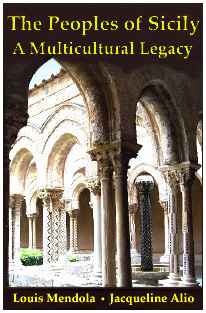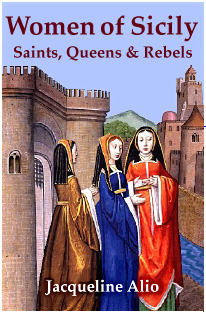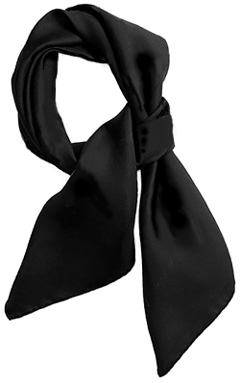...Best of Sicily presents... Best of Sicily Magazine. ... Dedicated to Sicilian art, culture, history, people, places and all things Sicilian. |
by Maria Luisa Romano | ||
Magazine Index Best of Sicily Arts & Culture Fashion Food & Wine History & Society About Us Travel Faqs Contact Map of Sicily
|
Most of Sicily's Muslim immigrants are Tunisians, and few of them wear scarves. It's actually quite exceptional to see an Arab woman in southern Italy wearing a higab. In fact more Indian and Pakistani women present in Sicilian cities wear head scarves, made of beautiful fabrics. In the popular mind, outside the immigrant population it's only nuns and brides who wear veils in Sicilian society, but that wasn't always the case. History is very revealing here. If we cast a glance backward to the latter decades of the eleventh century we'll see a multicultural Sicily whose people were Muslim, Christian (predominantly Orthodox) and Jewish. Visitors such as Idrisi and Ibn Jubayr, among others, observed that in Norman Sicily the vast majority of women dressed in a similar style which some chroniclers (being Muslim themselves) compared to the Muslim-Arab fashion. The information available is sparse at best, and it would be wrong to draw too many conclusions, but here is what we know.
In the Byzantine Empire, which included Sicily until the ninth century, head scarves were a sign of affluence for Christian and Jewish women. In larger cities these were made of silk and often quite colorful. As a sign of modesty, a Christian woman entering a church, like a Jewish woman entering a synagogue, would cover her hair. The custom was one which the Christians inherited from Judaic tradition. Into the 1950s it was normal for Roman Catholic women to wear hats or even scarves in church, and today they are still expected to cover shoulders and arms (especially in the more important basilicas in southern Europe).
Among Arab women living in Byzantine lands before the arrival of Islam the scarf was a sign of wealth. More than an accessory, it was an indication of conspicuous consumption. A status symbol. It doesn't strain the imagination to conceive of the streets of Bal'harm (Palermo) in 1090 being full of women --of various faiths-- wearing scarves of some kind. The cotton and silk industries flourished and Sicilian society, as a whole, was affluent. Scarves as head dressing were part of society, plain and simple. That's not to say that they lacked religious significance, but it's difficult to imagine people fighting a war over whether a woman could wear a scarf around her head during the Middle Ages. Times change, of course, but we're in deep trouble when a piece of fabric becomes a political symbol powerful enough to provoke open conflict among otherwise peaceful citizens. Last October, walking with my boyfriend along Palermo's Via Libertà, I saw an attractive young Arab girl (probably about sixteen years old) wearing a flowing blouse, a pair of jeans and a brightly colored head scarf. She was pretty, but except for the scarf she really didn't look too different from some of the cute young Sicilian brunettes milling around. What set her apart was the higab, which gave her an aura of the exotic. By contrast, most of the Palermitan girls looked all too ordinary, perhaps even unkempt --a point my boyfriend made as he glanced at my long wavy hair. My solution? I immediately suggested he buy me a silk scarf from the Hermes boutique across the street. About the Author: Maria Luisa Romano has written for various Italian magazines, including this one. | |
Top of Page |


 The veil. It's amazing how a piece of cloth could engender so much controversy, particularly in European countries where an increasing number of Muslim women choose to wear simple head scarves (the higab) to cover their hair. We're not talking about full face veils (the nijab) or the burqa.
The veil. It's amazing how a piece of cloth could engender so much controversy, particularly in European countries where an increasing number of Muslim women choose to wear simple head scarves (the higab) to cover their hair. We're not talking about full face veils (the nijab) or the burqa.